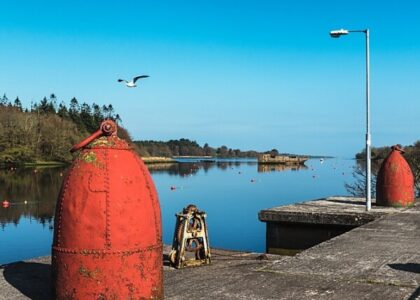Welcome to Qubbet el-Hawa, a historical gem on the western bank of the Nile, opposite the vibrant city of Aswan. This site, known as the ‘Dome of the Wind,’ has been a silent witness to millennia of history, serving as the eternal resting place for the nobles and priests of ancient Egypt. As you explore this necropolis, you’ll find yourself stepping back in time to the days of the Old and Middle Kingdoms.
Qubbet el-Hawa came into prominence during the Fourth Dynasty, continuing its significance through to the Roman Period. The name ‘Dome of the Wind’ is derived from the dome of a tomb belonging to an Islamic sheikh, but its historical importance stems from the tombs of ancient officials that line the terraces below. These tombs are invaluable to understanding the cultural and political landscape of Upper Egypt. The inscriptions on their walls tell tales of exploration, commerce, and military might.
Among the notable occupants is Mekhu, a leader who ventured on royal expeditions to the south. Tragically, Mekhu met his end at the hands of Nubians, prompting his son Sabni to lead a counterattack to recover his father’s body. Such stories illustrate the tumultuous and adventurous lives led by these ancient figures.
The site also includes the tomb of Harkhuf, an expedition leader who journeyed to distant lands, negotiating for goods that would grace the Egyptian court. Another significant tomb belonged to Sobekhotep, a seal-bearer of the King of Lower Egypt during the Fifth Dynasty. The tomb of Ishemai, dated to the Sixth Dynasty under Pharaoh Pepi II, adds further richness to the site’s historical tapestry.
Qubbet el-Hawa’s allure also extends to its architectural alignment. For instance, one tomb, QH 33, is oriented to the winter solstice, a testament to the advanced understanding of astronomy by ancient Egyptians. More recent archaeological discoveries include 10 crocodile mummies, showcasing the diverse and intriguing finds that continue to emerge from this ancient ground.
Early excavators like General Francis Grenfell, Ernesto Schiaparelli, and Howard Carter initiated studies, and the site has continued to draw archaeological interest, with recent work by the University of Jaén and the University of Birmingham focusing on uncovering its many secrets.
As you reflect on these stories, imagine the bustling activity that once surrounded these tombs, with expeditions setting out and returning, ancient rituals being performed, and a civilization reaching out to the known world in search of knowledge and trade.






